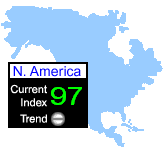Flag desecration amendment
The flag desecration Constitutional Amendment (House Joint Resolution 10 [H.J. Res. 10]) passed the House today by a vote of 286-130. Since the Constitution requires that for an Amendment to be proposed, it must pass by a 2/3 majority of each House (Art. V), so 2/3 of 416 voting is 278, which is clearly plenty enough (no it is not 2/3 of 435, just 2/3 of those voting, see ____ v. ____, __ U.S. __).
The corresponding joint resolution in the Senate, Senate Joint Resolution 12 [S.J. Res. 12] has yet to be taken up by the Senate, but is expected to be taken up by the Senate after the July 4 holiday. It is the same text as the House Joint Resolution.
The text of the resolution (and the amendment) is below:
109th CONGRESS
1st Session
H.J. RES. 10
[...]
JOINT RESOLUTION
Proposing an amendment to the Constitution of the United States authorizing the Congress to prohibit the physical desecration of the flag of the United States.
Resolved by the Senate and House of Representatives of the United States of America in Congress assembled (two-thirds of each House concurring therein), That the following article is proposed as an amendment to the Constitution of the United States, which shall be valid to all intents and purposes as part of the Constitution when ratified by the legislatures of three-fourths of the several States within seven years after the date of its submission for ratification:
Article--
'The Congress shall have power to prohibit the physical desecration of the flag of the United States.'.
In order for the amendment to be proposed for the States for ratification, it must be approved by a 2/3 majority of the Senate (67 if all Senators vote). The past six times that the House successfully passed this hurdle, the amendment failed in the Senate each time:
2003--H.J. Res. 4, passed House 300-125 (2/3=284)
S.J. Res. 4, no vote
2001--H.J. Res. 36, passed House 298-125 (2/3=282)
S.J. Res. 7, No vote
1999--H.J. Res. 33, passed House 305-124 (2/3=286)
S.J. Res. 14, failed in Senate 63-37 (2/3=67)
1997--H.J. Res. 54, passed House 310-114 (2/3=283)
S.J. Res. 40, no vote
1995--H.J. Res. 79, passed House 312-120 (2/3=288)
S.J. Res. 31, failed in Senate 63-36 (2/3=66)
From what I have read currently, there are approximately 65 Senators who will vote for the Amendment (see article). The article also notes that 35 Senators may be against the amendment (should everyone be in attendance, 67 is the needed majority), so it would fail. We shall see I suppose.
Should it be proposed and pass the Senate, it would have 7 years to garner ratification in 3/4 of the State legislatures. Assuming that no new States are admitted before the end of the seven year period, 3/4 is 38 States. There is no law that States by what type of majority it must be approved by, although there are quite a few bugaboos in the process (e.g., it is unconstitutional to ratify a Constitutional Amendment by referendum in a State [ _________ v. __________, __ U.S. __], but it is constitutional to call a "consultation vote"). It is possible that the time limit could be extended. Most people agree that if the time limit is embedded in the text of the amendment, it cannot be changed, but the theory is that it can be changed if the resolution proposing the amendment is changed. This was done to extend the ERA ratification time from seven to ten years, which promptly caused a lawsuit, but I do not believe it was adequately resolved before the ratification period ending.
And for everyone who wants to know, the reason that this amendment is being proposed is because of the Supreme Court decision, Texas v. Johnson (1989), 491 U.S. 397. The Court held 5-4 that flag desecration statutes were unconstitutional because it was a form of expression protected by the First Amendment (Brennan, Marshall, Blackmun, Scalia, and Kennedy were in the majority, with Kennedy also filing a concurring opinion; Rehnquist, White, and O'Connor dissented, as did Stevens in a seperate dissent). The decision probably would be upheld today if Souter, Ginsburg, and Breyer all voted with the majority as would be expected. The Court upheld a de facto reconsideration of Texas v. Johnson in United States v. Eichman (1990), 496 U.S. 310, invalidating a federal law prohibiting flag desecration (that was passed because of Texas v. Johnson) using the same reasoning (and the same 5-4 breakdown).
METAR KRDU 230151Z 23502KT 8SM FEW130 SCT250 22/17 A3002 RMK SLP160Labels: law





0 Comments:
Post a Comment
<< Home